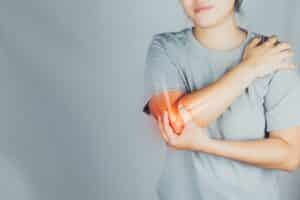
What Is the UCL?
The ulnar collateral ligament (UCL) is a thick band that runs from your upper arm bone to one of the bones in your forearm. This ligament helps provide stability within the elbow joint and prevent overextension and stress.
What Puts You at Risk?
Certain athletes who perform repetitive overhead throwing motions are more prone to UCL tears. This includes baseball pitchers as well as football, volleyball, tennis, javelin throwers, and gymnasts. Poor technique, inadequate rest between activities, insufficient conditioning, and weakness or tightness in muscles surrounding the elbow can also raise your risk. Genetic factors may come into play, too.
Recognizing a UCL Injury
If a UCL tear does occur, typical symptoms include pain along the inside of your elbow that gets worse over time. You may hear popping or snapping noises when moving your elbow or feel weakness, numbness, tingling, reduced range of motion, and loss of throwing velocity and accuracy. Seeking prompt medical diagnosis and care is key.
Considering Treatment Options
To determine the best course of treatment, the doctor will perform a physical exam, review your medical history, and order diagnostic imaging tests. Options range from more conservative nonsurgical methods to surgery for complete UCL tears or those not responding to other treatments.
If your UCL injury is not too severe, your doctor may recommend rest and restricting elbow activities, pain medications, anti-inflammatory drugs, physical therapy, platelet-rich plasma (PRP) injections to stimulate healing, and the use of a brace to protect the elbow.
Opting for surgery means a longer recovery but better outcomes for serious UCL tears in athletes who wish to maintain elite-level sports performance. The standard surgery is reconstructive UCL repair using a tendon graft to replace the torn ligament. With proper rehab afterward, many athletes can return to their pre-injury form in about a year or less.
Schedule an Appointment Today
Do not let a UCL tear bench you for too long. Call our orthopedic experts at Orthopedic Associates of Long Island (OALI) at 631-689-6698 to evaluate your injury and get you back on your game safely through personalized treatment. We help athletes across Long Island, NY, restore strength and mobility to their elbows after UCL surgery or other therapeutic options.